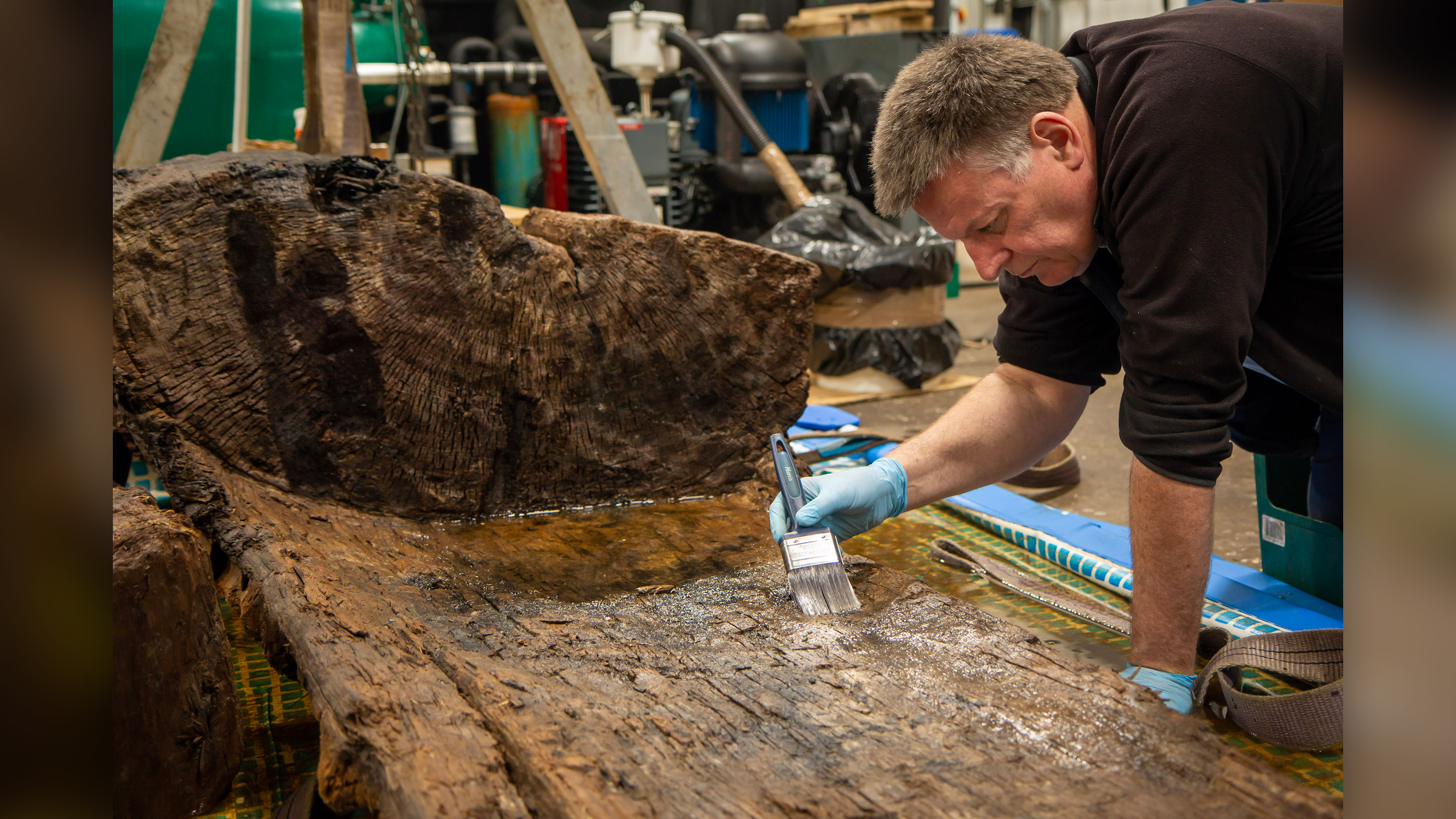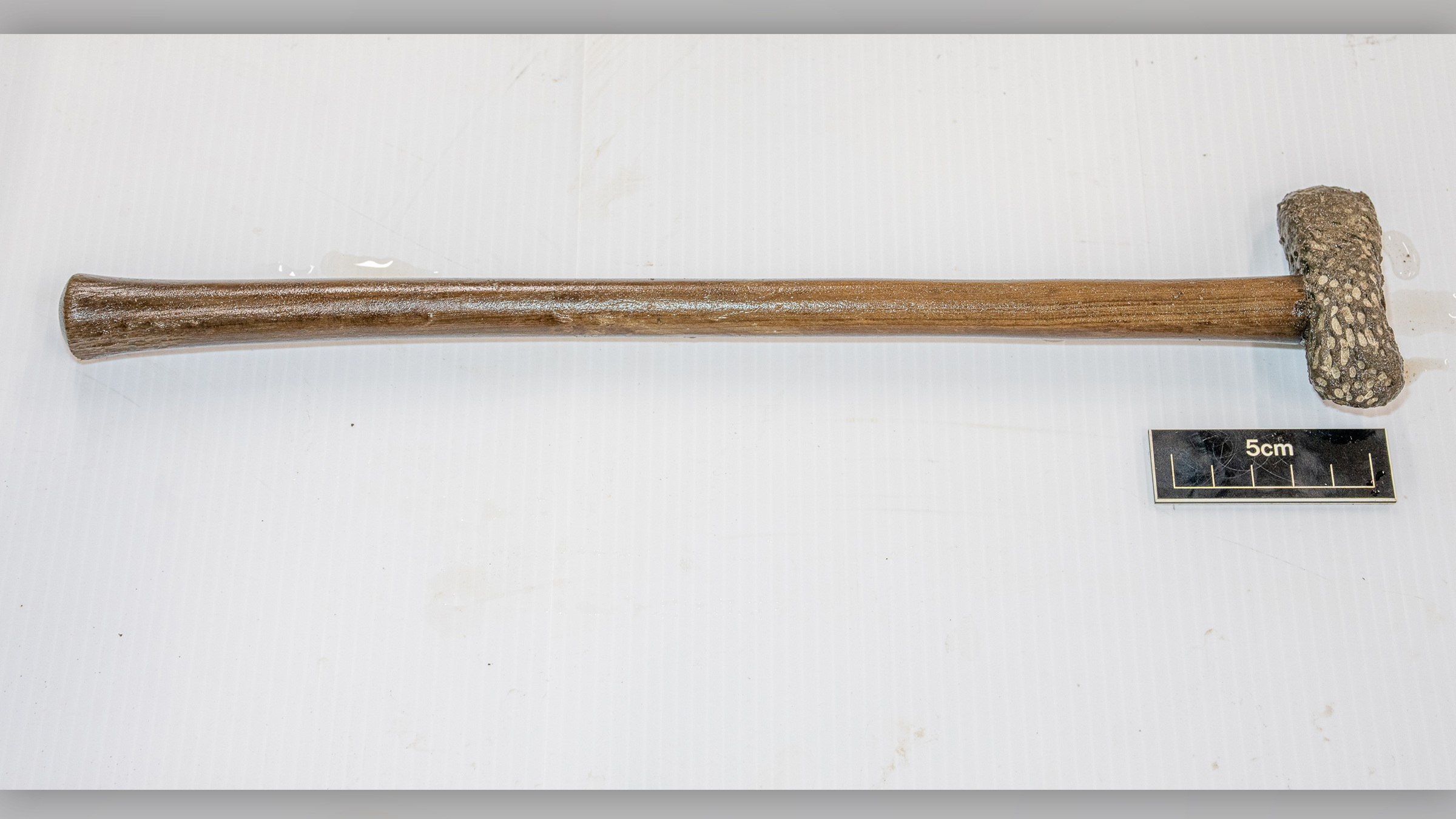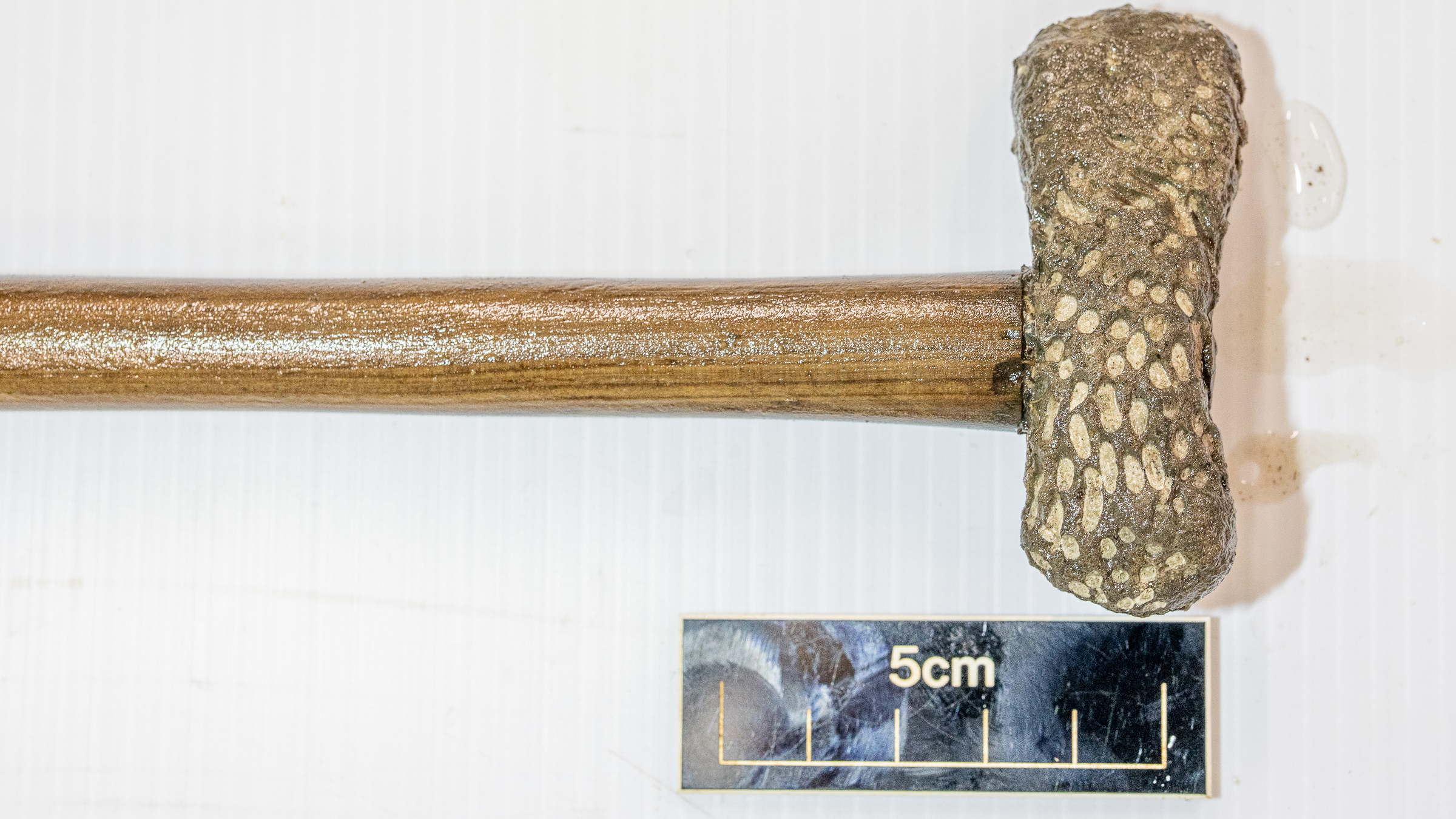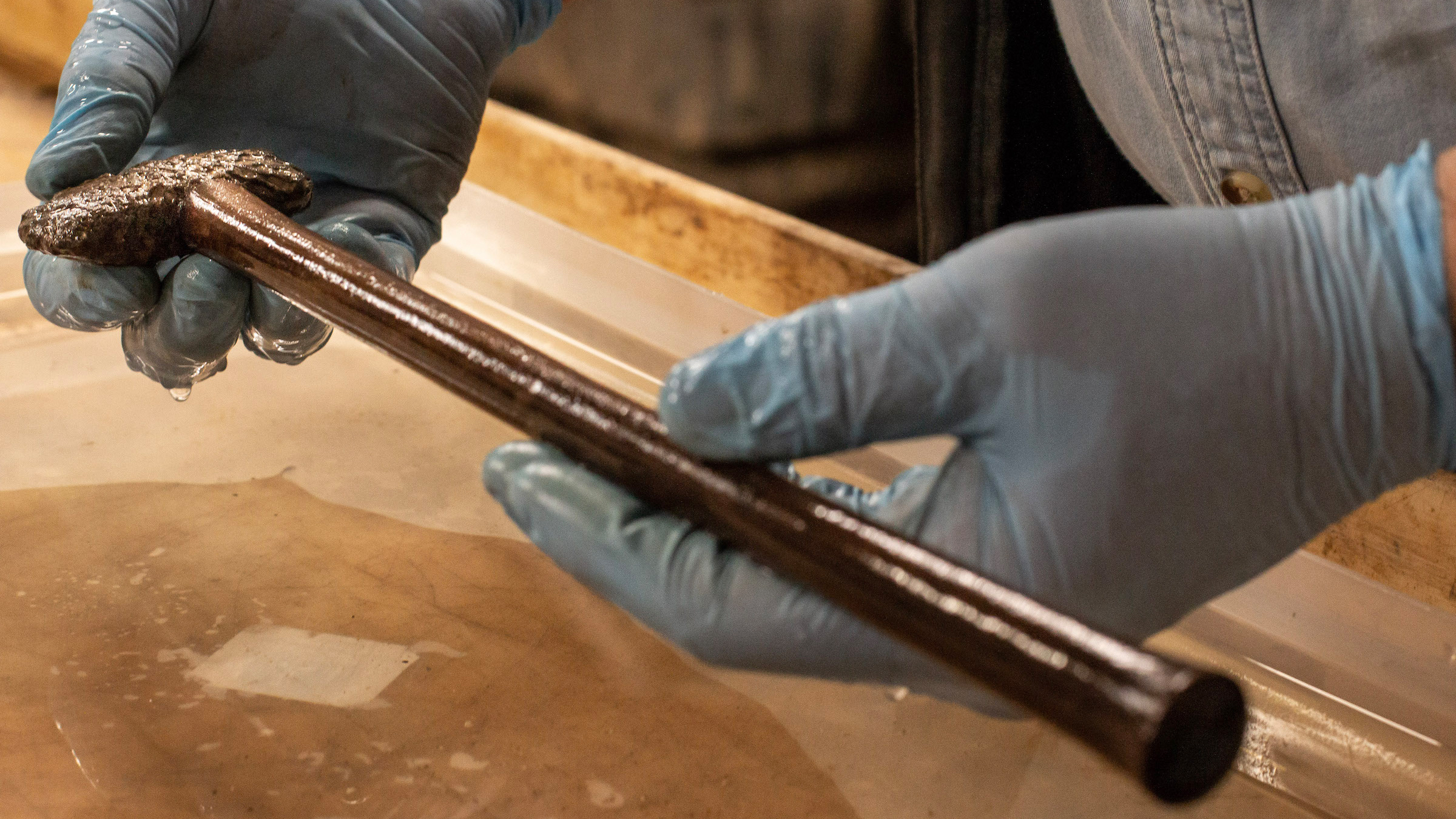Rare Bronze Age coffin uncovered on UK golf course
The coffin held the remains of a tall man and ax.

About 4,000 years ago, an elite Bronze Age man was buried with an ax in a hollowed-out log coffin. Now, archaeologists have announced the discovery of this coffin, which was found in an unexpected spot: a golf course pond in the county of Lincolnshire, in the United Kingdom.
The wooden-handled ax and the unique burial indicate that the man was a high-status individual. After the man's contemporaries dug out a tree trunk slightly longer than a modern telephone booth, they filled it with plants to cushion his body. Then, they interred the man's remains with the ax and built a gravel mound over the burial — a practice reserved for elite Bronze Age individuals, archaeologists said in a statement released last week.
"The man buried at Tetney [Golf Club] lived in a very different world to ours," Tim Allen, an archaeologist with Historic England who was involved with the project, said in the statement. "But like ours, it was a changing environment — rising sea levels and coastal flooding ultimately covered his grave and burial mound in a deep layer of silt that aided its preservation."
Related: Photos: A Bronze Age burial with headless toads
Archaeologists were stunned by the rare find, which they rushed to conserve in July 2019, after Tetney Golf Club reported the accidental discovery while doing maintenance work on the course. After getting a nearly $97,000 (70,000 pounds) grant from Historic England, an English historical preservation body, archaeologists poured hundreds of hours into studying and conserving the ancient remains, which they hope to put on display at The Collection Museum in Lincolnshire within a year or two.
Conserving the artifacts was challenging because they were discovered during a hot spell; archaeologists had to ensure that the delicate coffin and its contents didn't crumble after they were exposed to the air and sun.
"Bronze Age log coffins are rare, and for them to survive after their discovery is even rarer," Allen said, noting that archaeologists in Britain have documented only about 65 early Bronze Age log coffin burials. "Once the wet wood was out of the ground, there wasn't long to react."
Sign up for the Live Science daily newsletter now
Get the world’s most fascinating discoveries delivered straight to your inbox.

The remains were placed and studied in cold storage for a year and then moved to the York Archaeological Trust, an educational and archaeological charity in the U.K., where preservation work began.
"Organic material was preserved in the damp and airless conditions within the hollowed-out tree trunk," project leader Hugh Willmott, an archaeologist at the University of Sheffield, said in the statement. Some of the organic matter — the needle-like leaves of a yew or juniper — "can tell us about the plants that were chosen to cushion the body and even the time of year this man was laid to rest," he said.
According to a skeletal analysis, the man was about 5 feet, 9 inches (1.75 meters) tall, an impressive height for a Bronze Age individual. The man died in his late 30s or early 40s and likely had osteoarthritis, probably from "heavy work rather than old age," Willmott told The New York Times.



The burial's well-preserved stone-bladed ax — one of only 12 known in Britain — was likely more symbolic than functional, and may have served as a mark of authority, the archaeologists said in the statement. Moreover, the 10-foot-long (3 m) by 3-foot-wide (1 m) log coffin came from a single fast-growing oak tree that was split lengthwise and then carved out. Part of a wooden lid that covered the coffin survives, the archaeologists added.
The site of the coffin at the golf club is now protected as a Scheduled Monument, meaning its a recognized archaeological site of national importance in the U.K.
Originally published on Live Science.

Laura is the archaeology and Life's Little Mysteries editor at Live Science. She also reports on general science, including paleontology. Her work has appeared in The New York Times, Scholastic, Popular Science and Spectrum, a site on autism research. She has won multiple awards from the Society of Professional Journalists and the Washington Newspaper Publishers Association for her reporting at a weekly newspaper near Seattle. Laura holds a bachelor's degree in English literature and psychology from Washington University in St. Louis and a master's degree in science writing from NYU.










